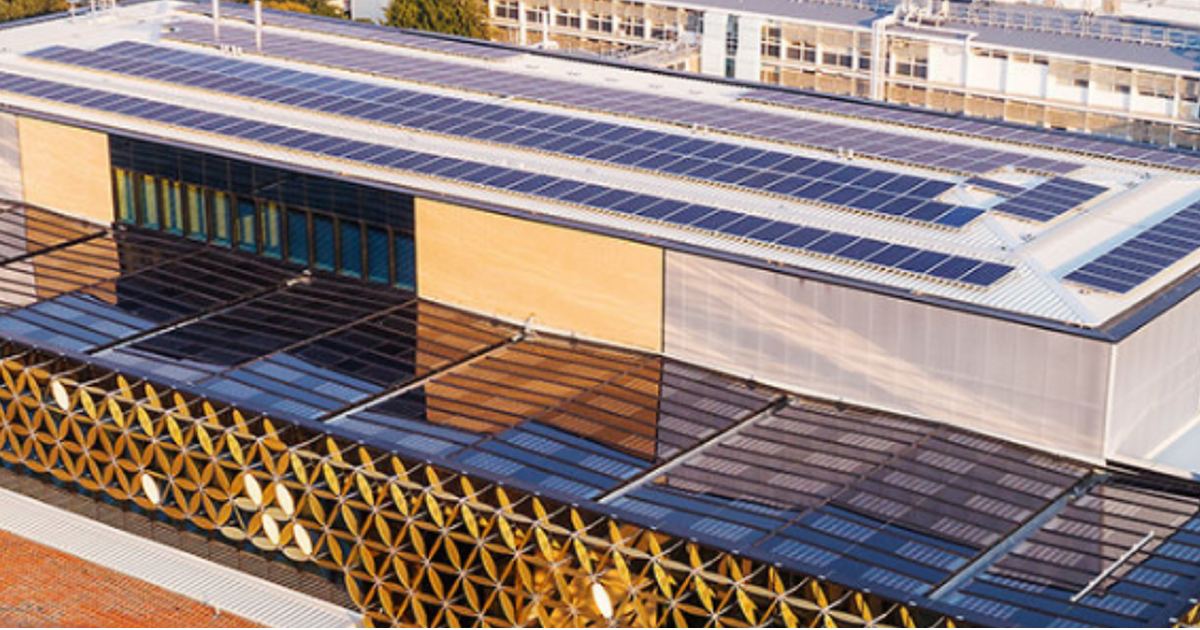
The University of Western Australia is aiming to be an “energy-neutral” campus by 2025, and of course solar energy is playing a role.
Situated in the Perth suburb of Crawley, UWA was established in 1911 as Western Australia’s first university and it was also the first free university in the British Empire. Starting out with just 184 students, UWA boasted almost 24,000 students enrolled across four faculties in 2022.
Operating a uni is an energy intensive undertaking, and like many institutions of higher learning the University of Western Australia is looking at how it can cut energy costs and emissions.
In 2019 UWA secured an electricity supply agreement involving Warradarge Wind Farm, a 180MW clean power station situated near Eneabba – around 280 kilometres north of Perth. This arrangement will offset 40% of UWA’s carbon emissions from electricity consumption this year, 70% in 2024 and 100% by 2025.
“Electricity accounts for 80% of our energy use, so this agreement is a significant and exciting step forward because it means we will abate all our Scope 2 emissions by 2025,” said UWA Energy and Sustainability Manager Dr. Geraldine Tan.
Scope 1 emissions include those associated with gas use, fleet vehicles and other non-energy sources. Scope 2 are emissions from electricity consumption.
The electricity side of things may already be sorted, but that hasn’t stopped UWA from installing on-site renewables generation in the form of solar power systems. Solar panels have been installed atop the Human Movement (18kW), Business School (38kW), Indian Ocean Marine Research Centre (78kW) and EZONE (117kW) buildings. Systems are also being installed at 39 Fairway, Gingin and UniHall (capacities not mentioned), and others are planned for 2023.
“Further work is in progress to secure renewable energy supply beyond 2025,” said Dr. Tan. “We’ve spent the last couple of years working on energy emissions identified under Scope 1 and 2. However, in the short-term, some carbon credits will need to be purchased to meet our goals.”
UWA’s Sustainability Dashboard
There’s an interesting feature on UWA’s site – the “Sustainable Campus Dashboard”
When I looked on Saturday morning, UWA’s solar systems had offset around 14.9% of building electricity consumption in the previous 24 hours; but “building” could do with a little clarification. The dashboard also provides insight into how much energy the University consumes. Assuming the numbers are correct, UWA’s operations consumed a mind-boggling 2.8 gigawatt-hours in the previous 30 days. That’s equivalent to the annual electricity consumption of 538 Western Australian households.
The whole planet-frying deal aside, it’s little wonder University of Western Australia is turning to renewables as it would have eye-watering mains electricity bills.
As well as solar and general energy consumption stats, another element on the dashboard relates to a “thermal battery”. UWA’s Thermal Energy Strategy (TES) project involves storing surplus chilled water for cooling buildings and equipment when electricity is greener and cheaper (and campus PV installations play a role here), for use during periods of peak demand. The chilled water plant is a huge energy consumer, accounting for nearly 776MWh in the last 30 days.

 RSS - Posts
RSS - Posts



The Sustainability Hub is commendably transparent and I am happy to see that UWA is taking energy consumption seriously. The numbers though are startling. Take, for example, the Reid Library – essentially fighting and information tech, with a sprinkling of catering (coffee shop). In the middle of the night, out of semester time when presumably even the keenest of students are not using the facilities, and the building draws 140 kW. Vampire load galore. The campus has gone to some lengths to reduce visible consumption (LED lighting around many buildings) but there is clear scope to improve. All the centrally-administered Windows machines with monitors glowing 24 h a day seems to be a problem IT cannot solve.
Yes, I work at UWA. Great to see it on SolarQuotes!